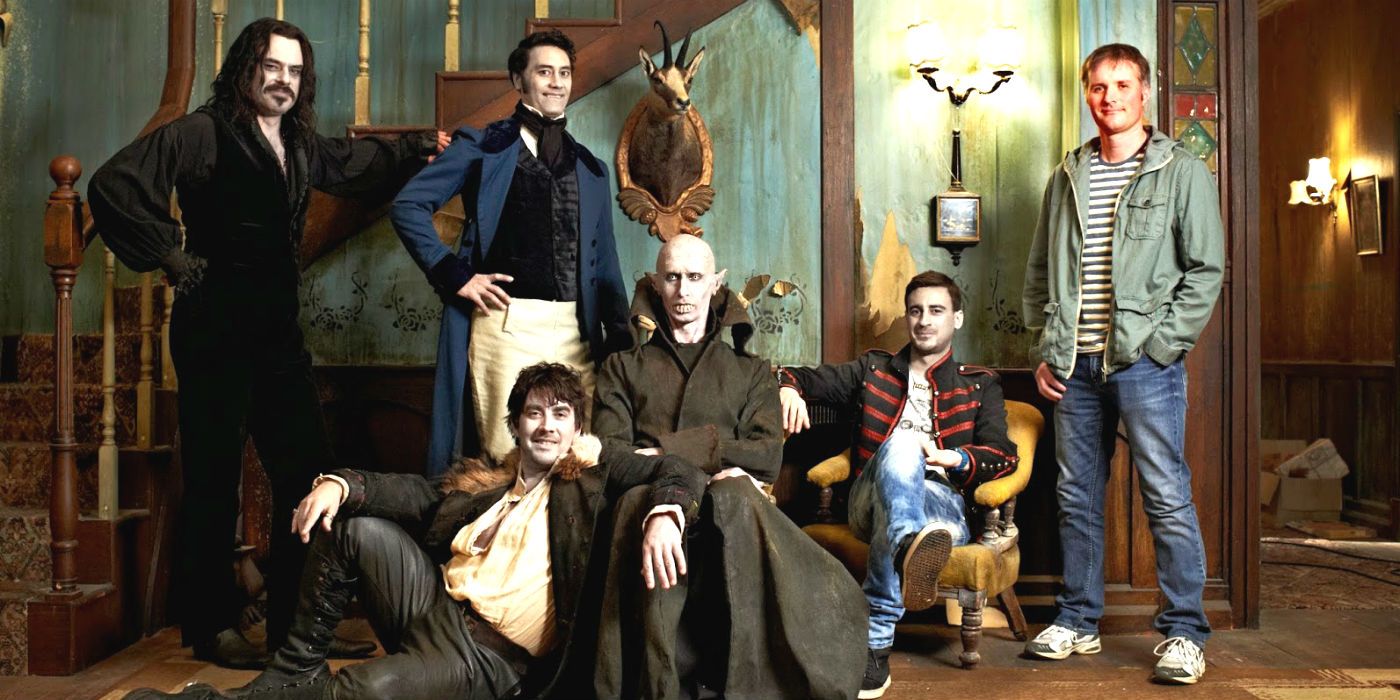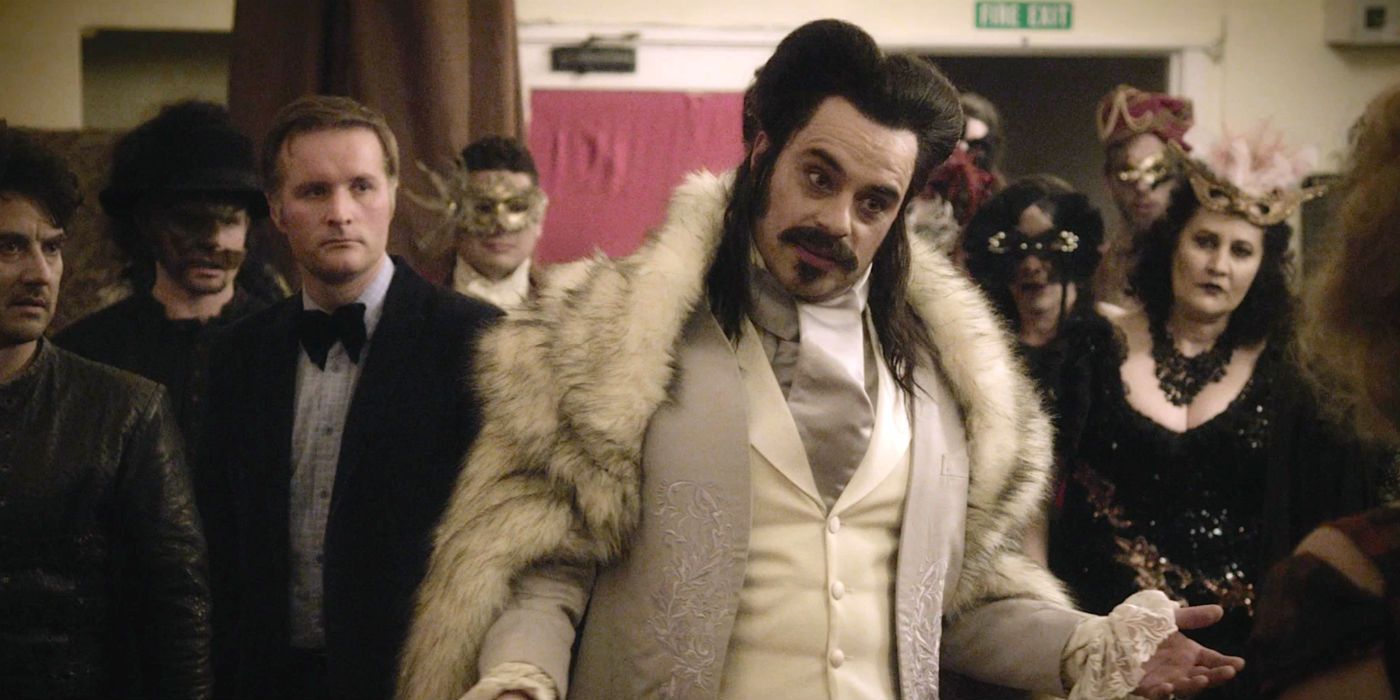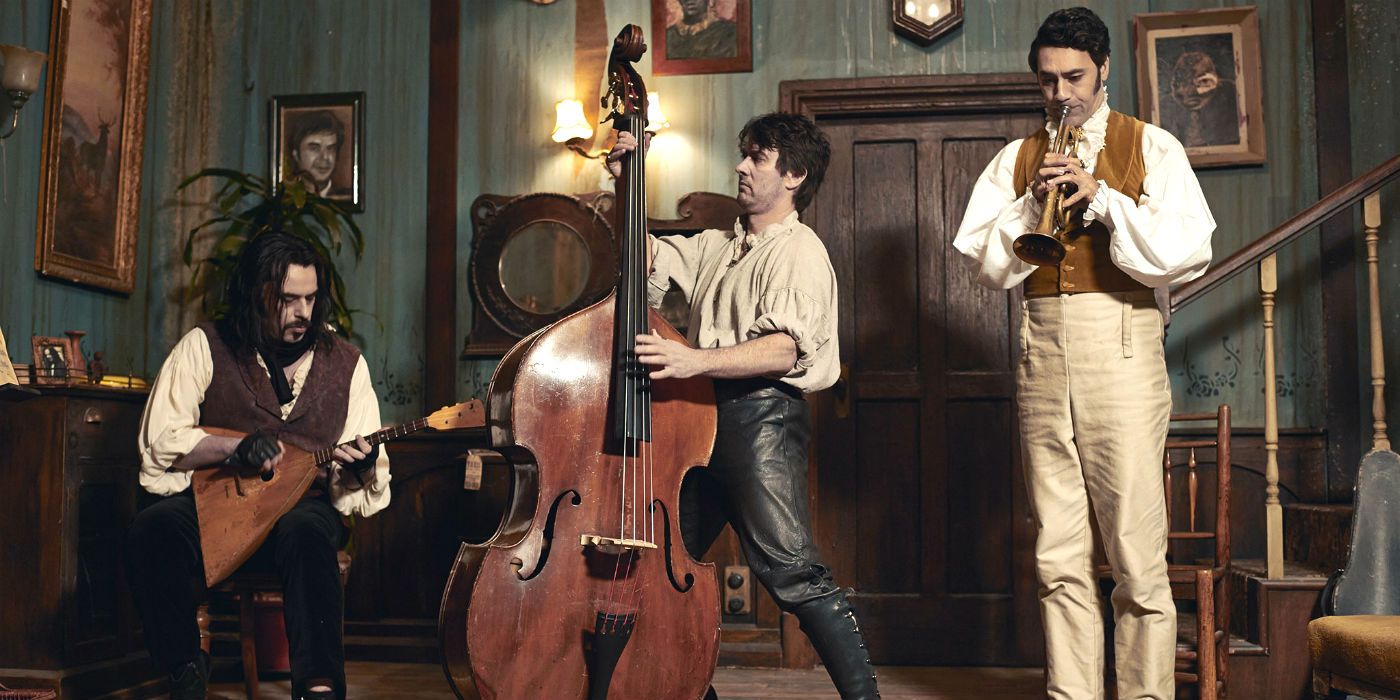In terms of parodying vampiric tropes, 2014 What We Do In the Shadows absolutely nails it, balancing comedy with precedent, the gothic with the mundane, rooting its zany vampire characters in pre-existing cultural inspiration.
When What We Do in the Shadows hit the big screen, the mockumentary was already experiencing rousing success on the small screen. The Office had recently wrapped up its final season, raking in an impressive 48 awards by the end of its runtime. Parks and Recreation, Arrested Development, and Modern Family were all on the air. Movies, however, hadn’t quite taken to the genre in the same way. Created by New Zealand duo Jemaine Clement and Taika Waititi, What We Do In The Shadows had a successful triumph over the silver screen, with a score of 96% on Rotten Tomatoes. Coincidentally, the vampire horror-comedy itself has now also turned towards television, with a serialized continuation onscreen as of this year.
What We Do In The Shadows sees a documentary crew following a group of New Zealand-based vampires on their day-to-day lives: sex-obsessed Vladislav (Jemaine Clement), foppish Viago (Taika Waititi), “bad boy” Deacon (Jonny Brugh), oblivious Nick (Cori Gonzalez-Macuer), and crypt-bound Petyr (Ben Fransham). The five vampires are roommates (a comic set-up Waititi ends up returning to again years later, after directing Thor: Ragnarok). It portrays a darkly comedic odd couple situation that establishes its own rules, treating chore duty, going out on the town, and murdering virgins for their blood with the same degree of irreverence.
The Vampires In What We Do In the Shadows Draw Inspiration From History & Literature
Many of the characters in the vampire parody are recognizable because they are based on historical or literary figures. In his very name, Vladislav conjures Vlad the Impaler, the cruel Romanian ruler who himself was Bram Stoker’s inspiration for Dracula. Using the dry humor that made Flight of the Concords an underrated darling, Clement does the role justice, stoic in his ridiculousness, funny in his horror. Brugh’s Deacon also appeals to Stoker’s famed Dracula, taking a basis in the novel’s eroticism for much of his humor. The vampire gothic is considered by Stanford academic Claire Jarvis to be the third best book on sex in Victorian literature.
Waititi rounds out the references to Victorians by playing the fashion-obsessed Viago. Called an “18th century dandy” by Vladislav, he resembles the high-society Lord Ruthven, the vampire figure at the center of John Polidori’s 1819 short fiction work The Vampyre, which is often considered the first piece of romantic vampire literature ever. To achieve this, Waititi modelled his performance on his own mother.
Visually, Each Vampire In What We Do In The Shadows Has A Cinematic Parallel
Dracula is the main inspiration for many of the characters. Vladislav’s look and mannerisms are based off Gary Oldman’s 1992 portrayal in Bram Stoker’s Dracula while Deacon’s are closer to Bela Lugosi’s iconic depiction of the vampire in 1931. Petyr, with his pale skin and pointy ears, is a clear reference to Nosferatu, an unauthorized German adaptation of Dracula that hit the screens in 1922 and has since established a legacy in its own rite. Viago in his classically elegant clothes conjures Louis de Pointe du Lac, played by Brad Pitt in 1994’s Interview With a Vampire, while Nick with his more modern outfits hints at Twilight’s Edward Cullen.
While the characters in What We Do In The Shadows have a clear basis in existing tropes and archetypes, they’ve taken on a life of their own thanks to a combination of strong acting and writing. In fact, several are so beloved by fans and creators alike, they have ended up reprising their role in the movie’s popular spin-off television show.



